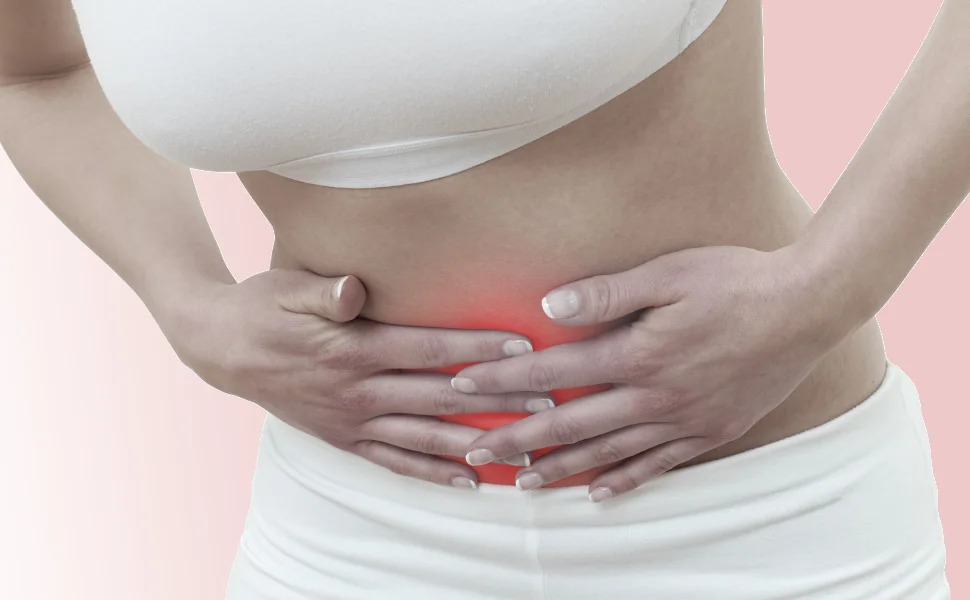What are Menstrual Cramps?
Menstrual cramps refer to the throbbing, aching pains that you feel in your lower abdomen just before or during your period. These are the most annoying and common parts of your period. They can occur at any time during the month. They are a common problem for many women. Cramps may range in severity from mild to severe. These usually occur a year to two years after a girl gets her period. They usually get less painful with age and may cease completely after your first child. Your doctor might diagnose you with dysmenorrhea.
Menstrual Cramps Signs
It is possible to have:
- Sometimes severe aching pain in the belly
- Feeling of pressure in your stomach
- Hip pain, lower back and inner thighs
If cramps become severe, symptoms could include:
- Upset stomach
- Vomiting
- Loose stool
When should you call your doctor?
Talk to your doctor if you experience severe or unusual cramps or persistent cramping for more than two or three days. It doesn’t matter what the reason, cramps can still be treated. Your symptoms and periods will be discussed with your doctor. Your doctor will perform a pelvic examination. This involves using a tool called a “speculum” to view your vagina as well as your cervical area. You may be asked to give them a sample of your vaginal fluid. They will then examine your uterus and eggs for any abnormalities. You might need to have other tests done to determine if your cramps are not due to your period.
Menstrual Cramp Risk Factors and Causes
Contractions in the uterus (or womb) cause cramps. It can contract too strongly during your monthly cycle and press against nearby blood vessels. This temporarily cuts off oxygen supply to the uterus. This is what causes cramping and pain. It is also possible to get cramps from:
- Endometriosis is a condition where the tissue lining your uterus (the enometrium), grows outside your uterus
- Fibroids in the uterus
- Adenomyosis occurs when the lining of your uterus grows into muscle nearby.
- Pelvic inflammation disease (PID), an infection that is caused by bacteria and spreads to the other reproductive organs.
- Cervical stenosis is a condition that causes a narrowing in the lower part your uterus. It can be caused by scarring or a deficiency of estrogen.
Menstrual cramps are more common if you have certain conditions. If you have the following:
- Are under 30
- Puberty began before or after the age of 11
- Periods of heavy bleeding ( menorrhagia).
- Metrorrhagia (an irregular menstrual cycle)
- A family history menstrual cramps
- Smoke
Menstrual Cramp Treatment
You can take aspirin for mild cramps or other pain relief, such as Acetaminophen, Ibuprofen or naproxen. These medication should be taken as soon as you feel the cramping or bleeding. You can also use heat to help. You can use a heating pad, hot water bottle or heating pad to heat your stomach or lower back. Warm baths may be helpful. You might also consider lifestyle changes to help you.
- You can rest when you need it.
- Avoid caffeine , salt and other foods high in .
- Avoid tobacco, alcohol.
- Massage your lower spine and abdomen.
- Take dietary supplement.
- Manage your stress.
- Try acupuncture, or Acupressure.
- Ask your doctor for information about herbal remedies.
Regular exercise can reduce menstrual pain for women who do it regularly. Make exercise part of your weekly schedule to prevent cramps. These steps may not be enough to satisfy your doctor. You may be prescribed medicines like:
- Ibuprofen (a stronger dose than what is available over-the-counter) and other strong pain relievers
- Oral contraceptives (Women taking birth control tablets experience less menstrual pain.
